The small FM-LM3 slip on flash supplied with the Olympus OM-D E-M5II is a really useful addition for close up shooting, but the light can be very direct and harsh resulting in strong defined shadows.
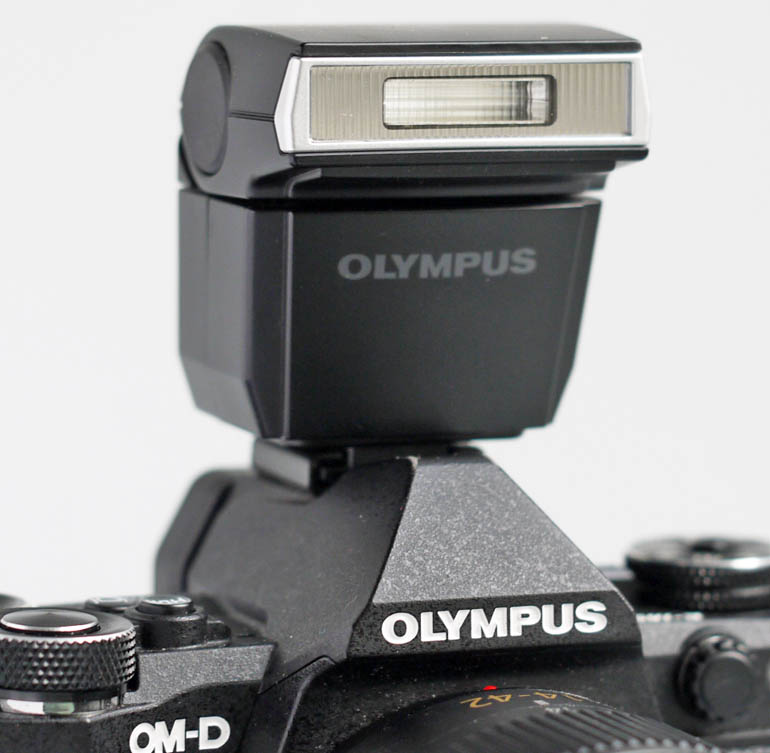
I found a way to improve it using a gadget sold in the 70s called the Rima Blitz Flash Converter.
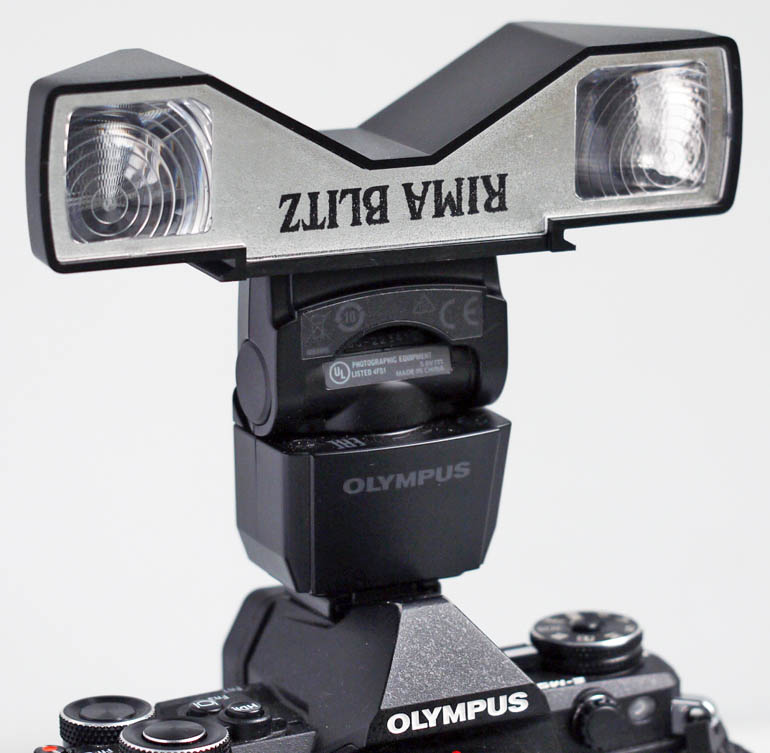
This handy gadget was designed for use with a small flashgun mounted on a film camera, but can also be used on the Olympus FM-LM3 flashgun. It splits the flash beam into two giving a wider spread of light almost like a really expensive macro flash set up.
You can find them occasionally on eBay and they original came in a box with some colour filters, a mounting adaptor to hold the converter securely on the flash and a right angle shoe adaptor for flashguns without a bounce facility.
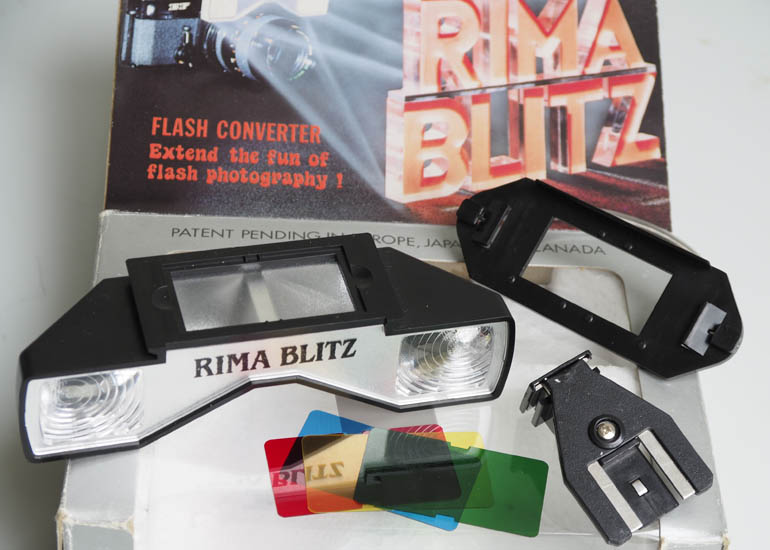
The mounting adaptor doesn’t work with the FM-LM3 so you need to hold the Rima Blitz converter in place unless the camera is level and then it will rest on top without need of any support.
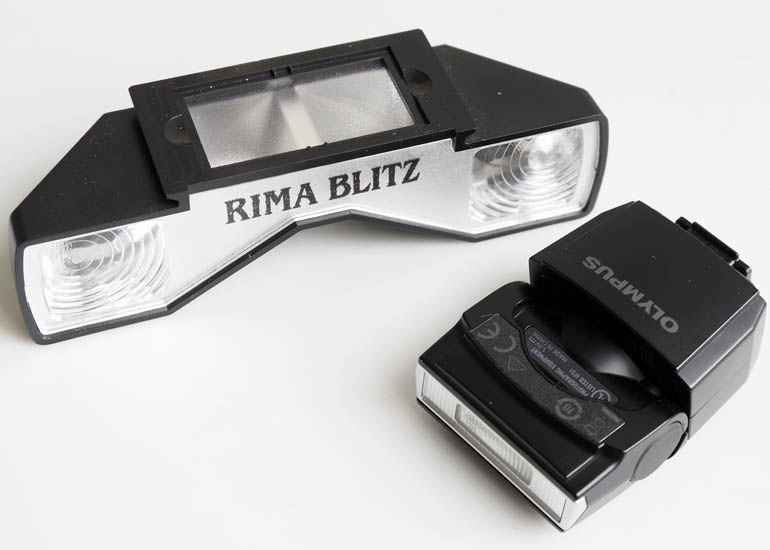
The camera’s flash output is reduced due to the bouncing of light inside the converter but the camera’s automatic exposure system compensates for the change in flash level so photos with the Rima Blitz in place will be correctly exposed.
Here are two examples of the Rima Blitz Flash Converter in use on the Olympus OM-D E-M5II’s FL-LM3 flashgun
Straight flash without Rima Blitz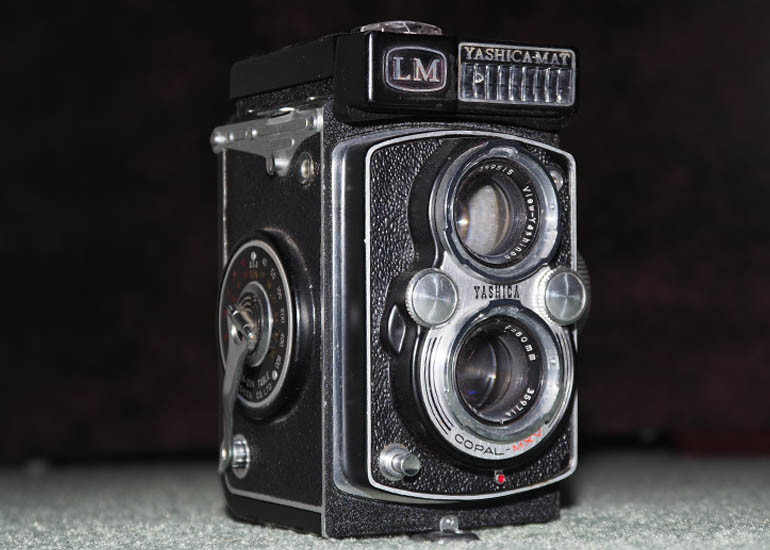
Flash with Rima Blitz attached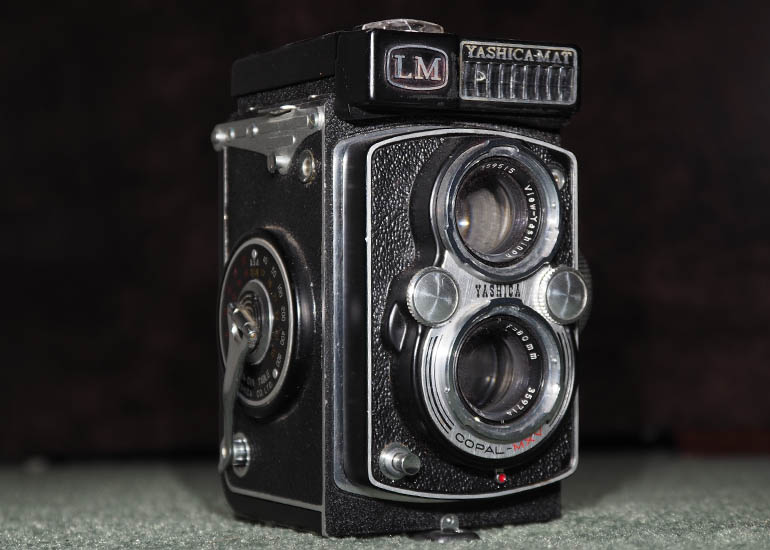
The main difference here is there’s less reflection on the camera’s silver coloured front plate and there are two soft shadows behind the camera on the surface.
Straight flash without Rima Blitz
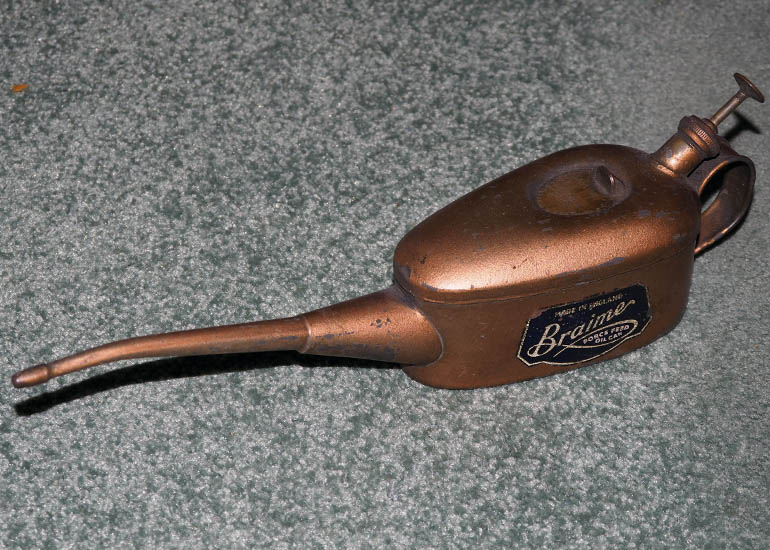
Flash with Rima Blitz attached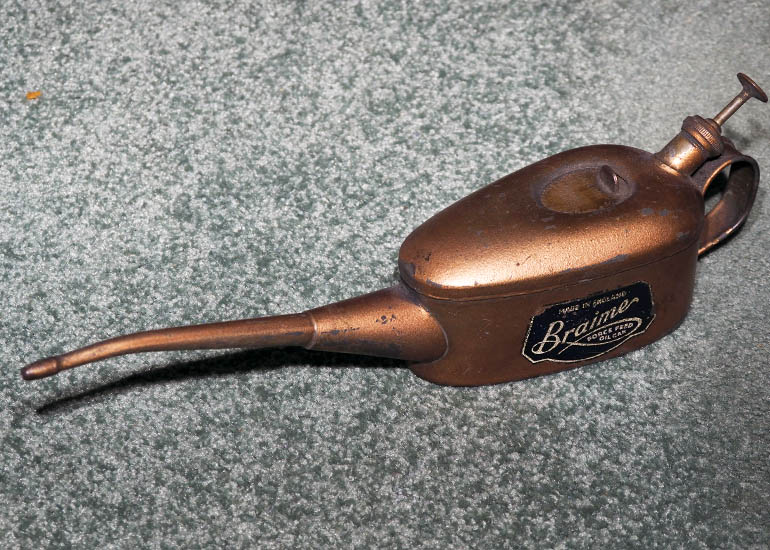 Here the shadows have lost their hard edge under the spout and plunger when the Rima Blitz is attached.
Here the shadows have lost their hard edge under the spout and plunger when the Rima Blitz is attached.
Rima Blitz Flash converter for sale here: Rima Blitz Flash Converter kit
Many of us have a need to photograph small objects for inclusion with auction posts on sites like eBay, or on shops such as Etsy, or to show your products on you own web site. There are also many who have an interest in photography of insects and other close up subjects from an artistic perspective.
Often the available light isn’t good enough in such situations so you resort to the built in flash of your DSLR, or slide the hotshoe mounted one to the camera. And that’s where you may find you have a problem.
When shooting close ups the lens is often so close to the subject that it obstructs the flash and results in a shadow of the lens cast over the subject. A ring flash is attached onto the lens. It provides a circular light that results in shadowless illumination. This is ideal for small items, and the light wraps around 3D items so you get a more even tone.
You can buy ones made by your camera’s manufacturer, but these tend to be very expensive so it’s worth looking around for an independent model, and some great older ones can be picked up for much less money. The manufacturers’ ones and some of the more expensive independents have TTL (through-the-lens) exposure so they adjust the flash output and compensate automatically for close up extensions and filters. But as most cameras used now are digital it’s easy enough to use an older manual ringflash and check the result on the LCD display.
At PhotographyAttic we have a small selection of used models and really like the Sunpak GX-8r because, unlike others, the batteries are in a separate power pack…and that means the flash unit attached to the lens is much lighter. This is an important consideration as it puts less strain on the lens mechanism. There’s a review of the Sunpak GX8r here
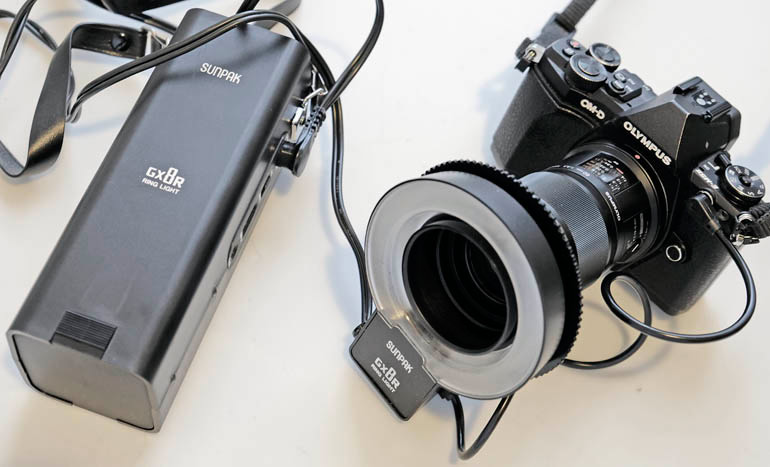
For those on a budget, check out the Centon MR20. It does have batteries in the flash, but just two AAs so its not too heavy. This flash unit was also made for the Vivitar, Starblitz and Cobra brands too. Doi also made an interesting unit for those who don’t have a flash sync socket on their camera, this one had the battery pack that slides onto the camera’s hot shoe.
Want to take photos of balloons bursting, party poppers popping or water drops in mid drop? It’s all possible with a technique referred to as high speed flash.
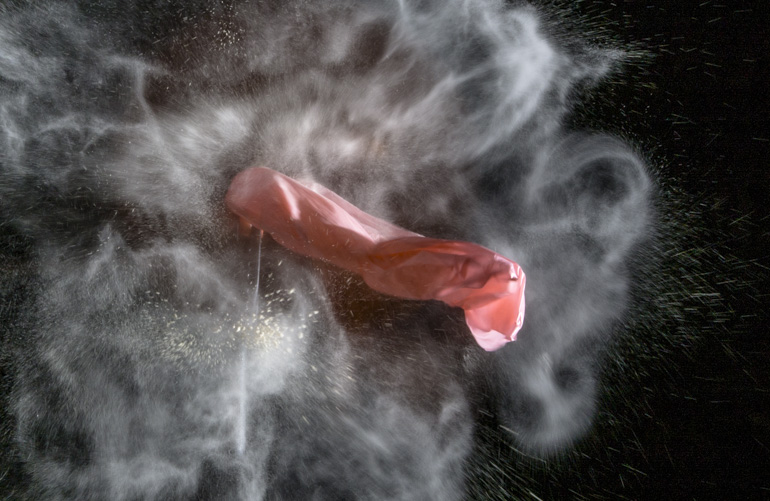 Balloon with small amount of flour added and triggered with Nero Trigger
Balloon with small amount of flour added and triggered with Nero Trigger
Your camera may have an action stopping shutter speed of 1/8000sec, but often there’s not enough light to allow this sort of speed so the preferred option is flash. The camera can be set to the flash shutter speed of 1/125sec and the flash provides the action stopping speed by illuminating the subject at its flash duration which can be anything up from 1/500sec. Many go into the 1/20000sec area. The subject is illuminated in this quick burst which ensures it’s frozen in motion.
But there’s a bigger problem. How do you ensure that the moment you fire the shutter is the perfect moment. You can with either luck or incredibly good timing. Or better still take the guess work out and use a device that triggers the shutter at the precise moment required.
Such devices, known as triggers use sound, light or laser beam splitting to detect the trigger moment. They attach to the camera’s remote release socket using a dedicated cable. Some cameras have a simple 2.5mm jack others are more complex electronic connectors. The remote trigger will usually have cables to suit most popular camera fittings from Nikon, Canon, Olympus, Pentax, Sony, Minolta, Panasonic, etc.
If you want to photograph a balloon bursting you’d probably switch to the sound detector. The trigger has a microphone that senses the noise of the balloon pop and fires the camera instantaneously*.
Photographing a drop of water from a tap would require the laser beam splitter mode and would fire the trigger when the beam was split.*
You would use the light sensor to record a streak of Lightning. The trigger would fire when it detected a change in ambient light levels.*
* the exact moment the shutter fires can be adjusted in milliseconds so the trigger can fire slightly after the detection of change. This means you can allow for various delays that may occur.
The devices available range from very simple triggers to highly advanced.
Products available include:
Nero Trigger
Sabre Switch Triggersmart Motion Capture System
AEO Photo produce the Lightning Strike
The Time Machine
PhotoTrigger




 Here the shadows have lost their hard edge under the spout and plunger when the Rima Blitz is attached.
Here the shadows have lost their hard edge under the spout and plunger when the Rima Blitz is attached.



